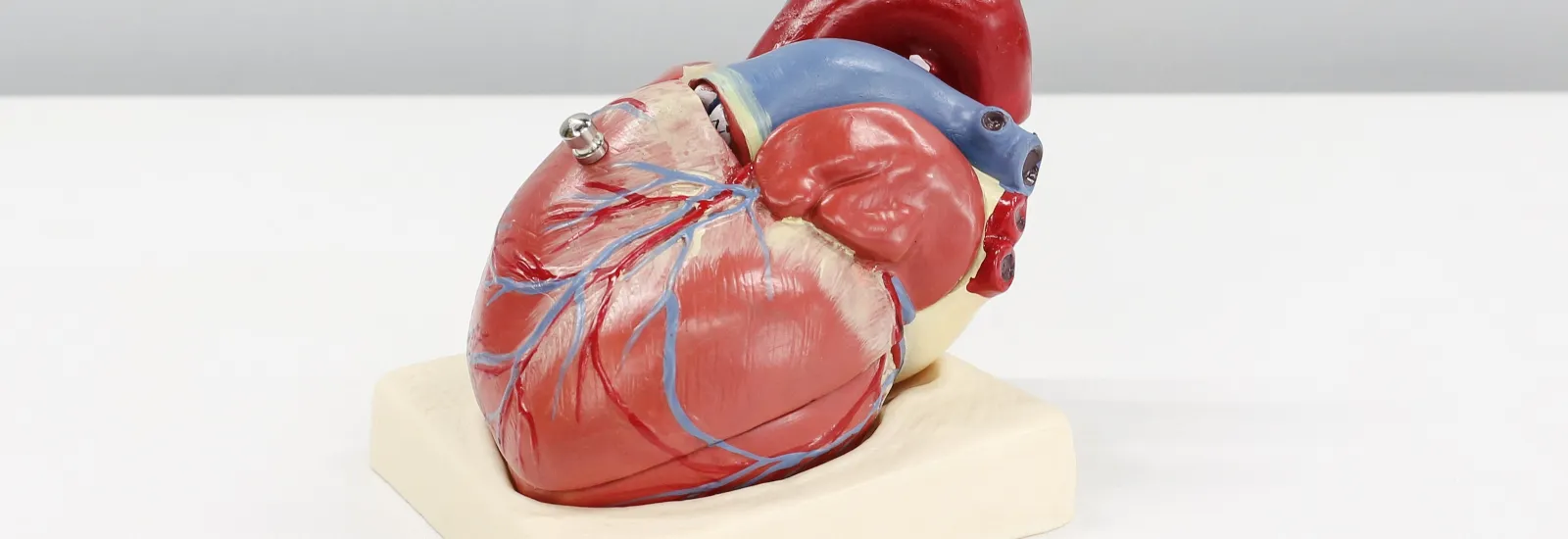
AFib Treatment: From medication to surgery
4-minute read
If you have atrial
fibrillation (AFib), your heart's upper chambers don't work in sync with
the lower ones, causing an abnormal heartbeat. Just because your heart is out
of rhythm doesn't mean your life has to follow suit. AFib treatment can help
your heart get in a safe beat so you can focus on the people and activities you
love. Best of all, with a variety of treatment options to choose from, your
clinician can find one that works for you.
Why is treating AFib important? Symptoms for this condition,
such as chest pain, shortness of breath, and fatigue, can affect your ability
to work, do household chores, and spend time with loved ones. In addition, AFib
increases your risk for stroke.
In fact, 15% of strokes in the U.S. are due to AFib, according to the American
Heart Association. You also have a higher risk for heart failure if you
have AFib.
Let's explore the main AFib treatment options heart
specialists use to control symptoms and help prevent stroke and other
complications.
Medications: a common first-line AFib treatment
The most common treatment for AFib — and usually the first
type of therapy clinicians recommend — is medication. In many cases, your
provider may prescribe medications alongside recommendations for healthy
lifestyle changes, such as exercising, maintaining a healthy weight, and quitting smoking.
These changes can also help treat high
blood pressure and other conditions affecting cardiovascular health and
stroke risk.
Medications frequently prescribed as part of AFib treatment
include:
Beta blockers. These medications slow the
pumping rate of the heart's ventricles (lower chambers), giving them more time
to fill with the blood your heart sends out to the rest of the body.
Blood thinners. Warfarin, heparin, apixaban,
and other types of blood thinners help reduce the risk of blood clots forming.
AFib increases your risk for strokes, which occur when a blood clot blocks blood
flow to the brain. Be sure to follow your clinician's dosing and safety
instructions carefully. Blood thinners increase
your risk of bleeding, and other medications may interact with them.
Certain blood thinners may require monthly blood tests to check the dosing
levels.
Calcium channel blockers. Like beta
blockers, calcium channel blockers slow the ventricles' pumping rate. Calcium
channel blockers may be a good option for some people who can't take beta
blockers.
Always take medications as prescribed, don't stop them without your clinician's permission, and notify your clinician of any side effects.
Restoring a normal rhythm with electrical cardioversion
Some patients
may need a type of AFib treatment that restores a normal heart rhythm quickly
using low-intensity electricity. Known as electrical cardioversion, this
treatment may be necessary in an emergency, but clinicians also use it in
nonemergency situations.
If you're a
candidate for electrical cardioversion, you may first need a procedure called a
transesophageal
echocardiogram so clinicians
can check for blood clots in the heart. If they find clots, you may need to
take blood thinners before having an electrical cardioversion. During the
procedure, a clinician will use a machine to deliver mild electric shocks to
the chest. This energy sends the heart into a normal rhythm.
Catheter ablation to treat AFib
Many people think of medical-related scarring as an unwanted
byproduct of certain treatments. However, for one type of minimally invasive
AFib treatment, scarring is the goal.
During catheter ablation, clinicians scar the areas of heart
tissue that produce the abnormal electricity driving AFib. How do they know
which tissues to target? They use a special catheter, or small tube, to map the
heart's electrical activity. After pinpointing the abnormal signals' origins,
the clinicians send a different catheter through the blood vessels to the
target areas and use heat energy or extreme cold to destroy the tissue, which
creates scars.
Some people need an implantable device called a pacemaker
after catheter ablation. If AFib occurs again, the device sends electrical
impulses to the heart. These signals prompt it to return to a normal rhythm.
On guard against stroke: WATCHMAN treatment for AFib
If you have AFib unrelated to a heart valve problem and want
an alternative
to taking blood thinners to reduce stroke risk, a newer form of treatment
may be appropriate for you. Known as the WATCHMAN
device, the Food and Drug Administration approved this treatment in 2015.
For eligible patients, WATCHMAN can eliminate the need for long-term warfarin
therapy.
How does the treatment work? A clinician makes a small cut
in the top of your leg near the groin and inserts a catheter. Then they guide
the quarter-sized WATCHMAN device through the catheter to a sac in your heart's
left atrium called the left atrial appendage (LAA). With AFib, blood can pool
in the LAA and, potentially, form clots. A clot could leave the LAA, lodge in a
blood vessel carrying blood to the brain, and cause a stroke.
When your clinician implants the WATCHMAN device in your
LAA, it closes the structure to stop blood from entering and prevents blood
clots from forming or getting out. Most people who have the WATCHMAN procedure can
stop taking blood thinners within a few months.
Enter the maze: another surgical AFib treatment
While many people are able to have their AFib treated nonsurgically,
that's not possible for everyone. In some cases, a surgical procedure called
maze may be appropriate.
As with catheter ablation, the goal of the maze procedure is to create scar tissue. However, instead of making a small cut and using a catheter to reach the heart, the surgeon operates on the organ through an incision in the chest and makes a series of small cuts or other means to create scar tissue. Because electrical activity can't move through scar tissue, abnormal electrical signals can't reach the heart.
Wondering which
treatment for atrial fibrillation would make the most sense for you? The
specialists at the Reid Health Heart & Vascular Center can help you make a treatment plan.

